How to Setup a Home Gym for Runners
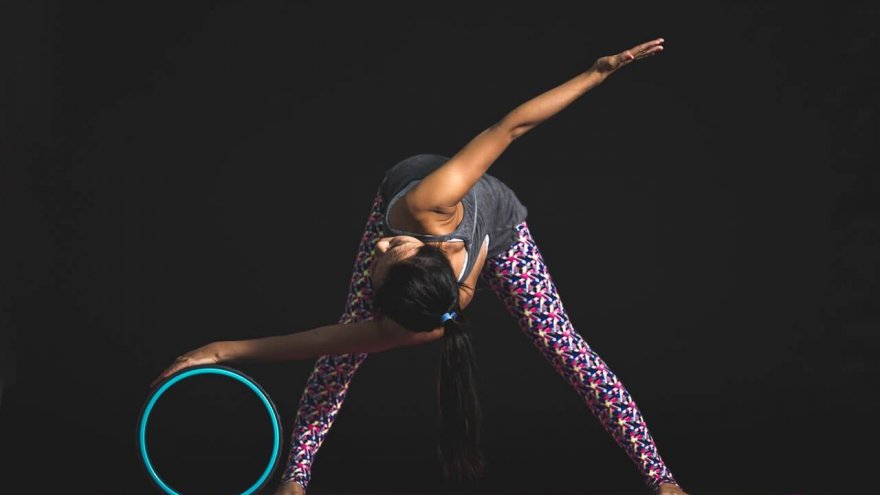
Because I have spent the last year and a half rehabbing from a torn meniscus (no surgery), I have relied heavily on my home gym to maintain a level of fitness fairly close to that prior to my injury. Although I live within walking distance of a gym (about 200 meters!), working out at home gives me the flexibility to plan workouts around the activities of my day versus the hours of the gym. And after the initial outlay of money for equipment, there are no membership fees or additional charges for special classes. I don’t need to wait for a piece of equipment to free up or fight for a spot in a class.
Whether you are using a home gym as your primary exercise spot or just supplementing your running with additional workouts, there are some essential pieces of equipment for both.
Cross-Training
If you are just looking to supplement your running with some strength or flexibility workouts, you probably don’t need any big-ticket pieces of equipment. If you are interested in cross-training workouts that are similar in intensity to running, however, you might want to invest in an exercise bike, elliptical or rowing machine. All of these offer good cardio workouts that give your legs a break from pounding the pavement and the latter two have the added benefit of providing a full-body workout.
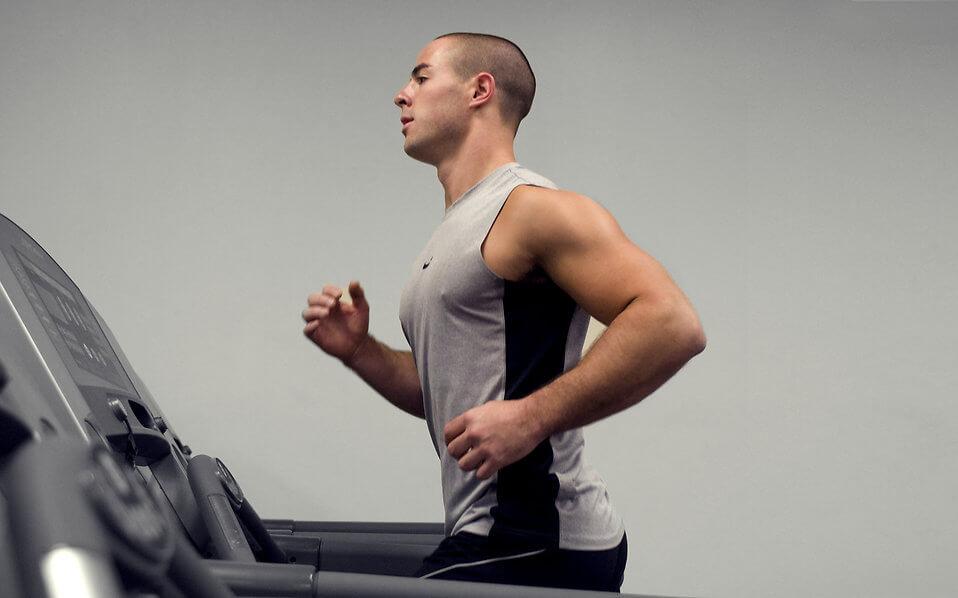
If you are a purist and just want to stick to running, a treadmill offers a softer ride and the option to run even during inclement weather or in the dead of night without having to worry about being seen by drivers.
Strength Training
Although you can gain quite a bit of strength just by lifting your own bodyweight—push-ups and pull-ups, for example—for those who want to work specific muscles groups in different ways, barbells and weighted plates or a set of dumbbells allow you to incorporate a variety of lifts into your strength-training routine in your home gym. Because I’m usually lifting weights that are on the lighter side, I find dumbbells easier to use but if you are interested in adding Olympic lifts to your routine, a barbell with plates is a must.
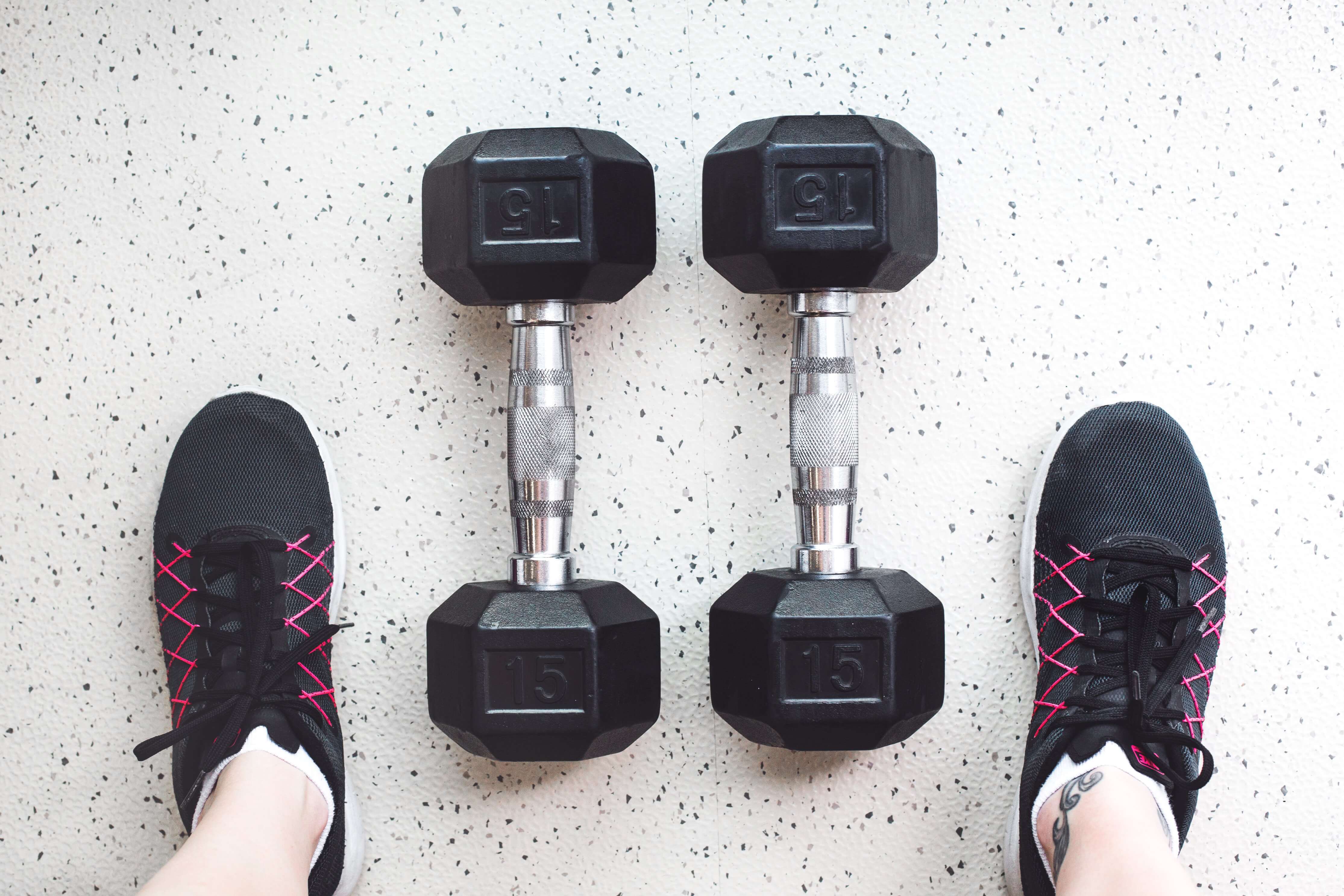
Dumbbells range in weight from one pound all the way to over 100 pounds and most are fixed weights although you can buy sets that allow you to adjust the weight of each dumbbell within a certain range. If you don’t have room for dumbbells and weights, resistance bands offer a similar workout and are easier to store and take along when you travel.
Bands are often color-coded based on their resistance and sets usually include resistance anywhere from 10 to 50 pounds. Bands can be used together to create more resistance when needed. Resistance bands enable you can replicate any movement that you would do with a dumbbell and chin-ups or pull-ups by using the door anchor that comes with most bands. Resistance bands allow me to perform the movements of chin-ups and pull-ups rather than having to use the chair-assist method on my door frame-mounted pull-up bar.
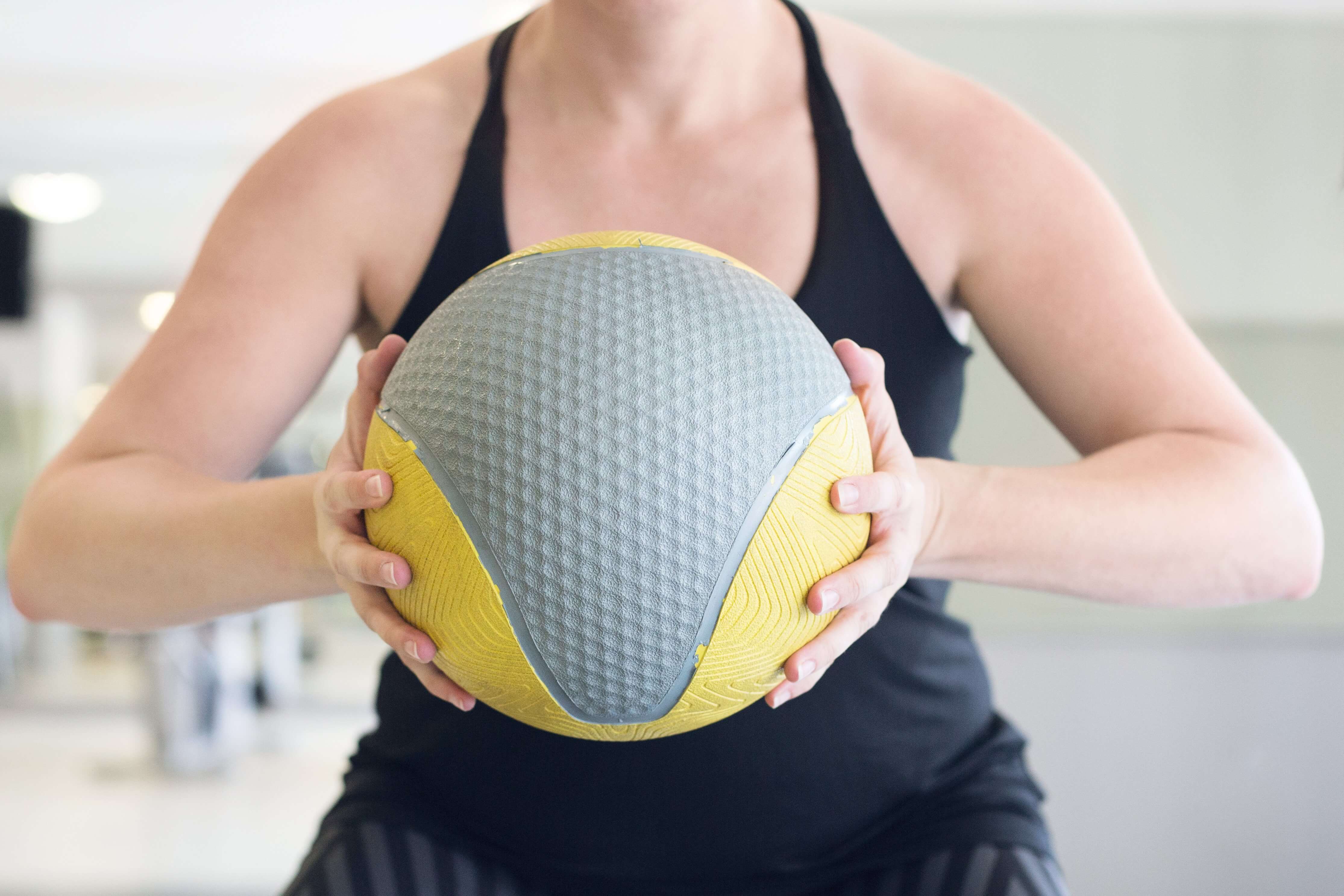
If you haven’t maxed out your space with dumbbells, how about adding some balls? Weighted medicine balls, available in a variety of weights and materials, can be used for total body and core strength work. Stability balls, which are available in different sizes, can be used for core strength and when used as a base—like a weight bench—can add an extra level of balance work to upper and lower body strength training.
No matter the type of weight you use for strength training, make sure you have secure footing when lifting them. Although my home gym area is carpeted, I use four interlocking rubber mats to aid in traction and to give me a bit more cushion when I’m lifting and doing things like burpees and tuck-knee jumps. Plus, the mats protect the carpet from the wear and tear of exercises like mountain climbers.
Supplemental Training
For those who incorporate supplemental training—like Pilates or yoga—into their exercise regimens, a good yoga mat is essential, even if your gym area is carpeted.
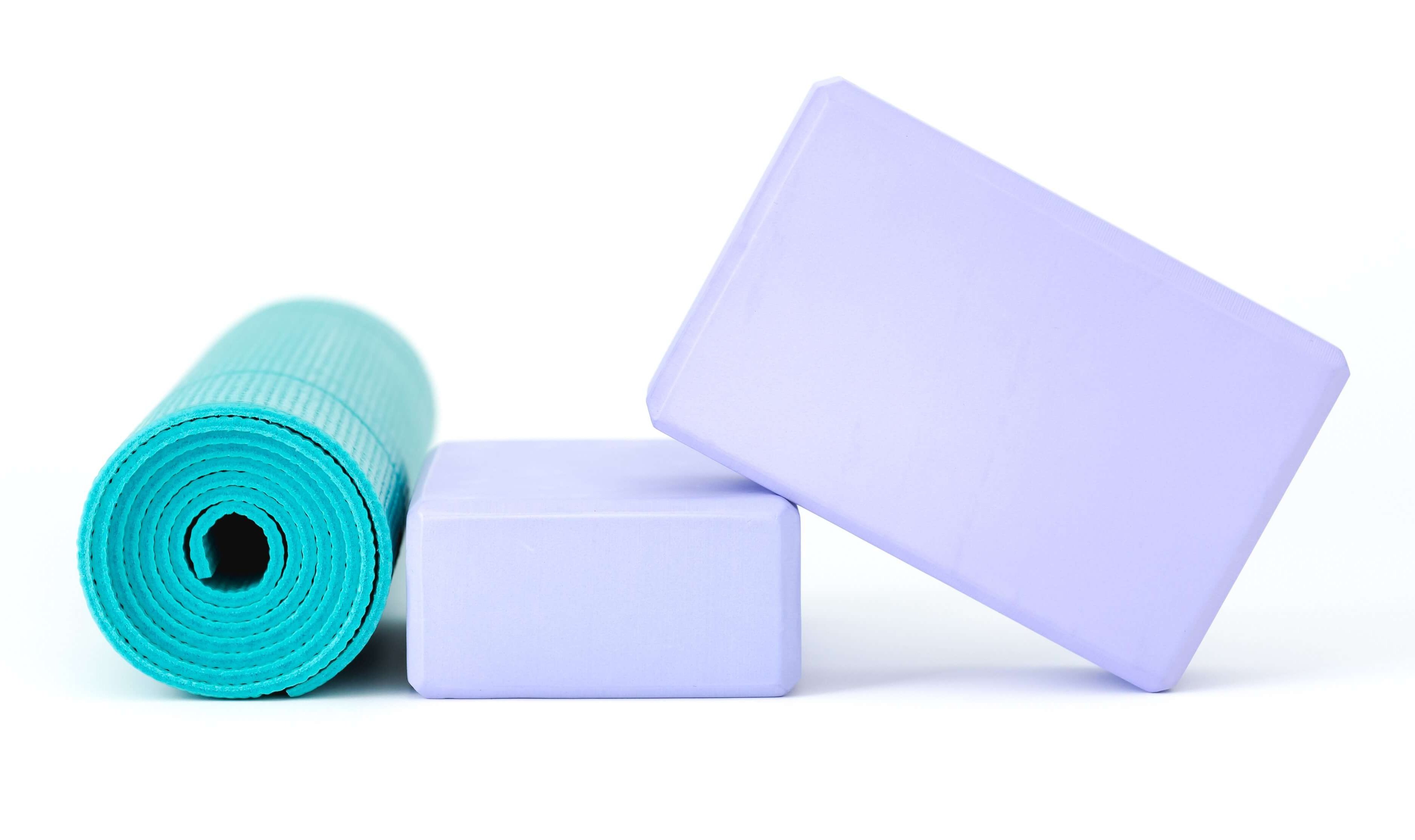
For those who aren’t extremely flexible (or who have short arms!) a yoga block and yoga strap are helpful in holding some difficult poses. Additionally, yoga socks with rubber grips on the bottom also can help with stability as they prevent sliding on the yoga mat.
Recovery
A home gym wouldn’t be complete without a few things to aid recovery from a hard workout. If you have been a runner (or any kind of athlete) for some time, you may already have a good arsenal of recovery equipment.
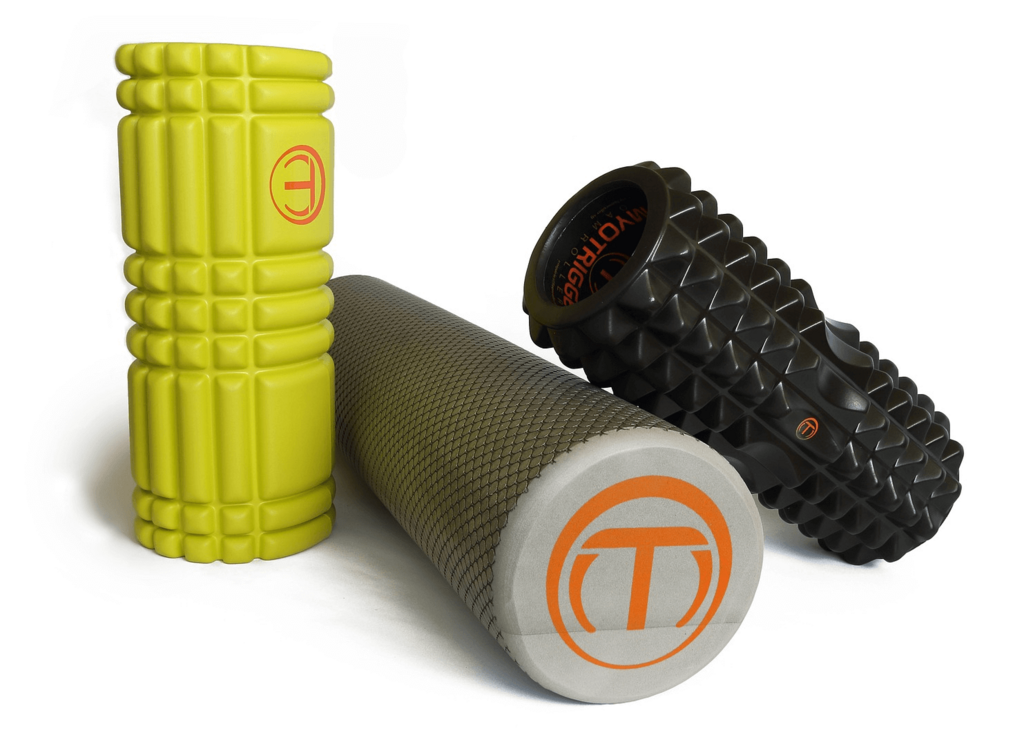
A foam roller can help release muscle tension and soreness and work out kinks or knots as can a harder, plastic muscle rolling stick. An elastic stretching strap can help stretch some hard-to-pinpoint areas and increase the depth and intensity of a stretch.
And while not a necessity, if you have the room and the budget, a dorm-sized fridge stocked with water, chocolate milk or your favorite recovery drink can speed up rehydration and hasten recovery.
You built a home gym. Now what?
There are a plethora of training plans online, from cross-training and strength training to yoga and Pilates and everything in between. You can find workouts to print out or stream online. And of course, there are thousands of pre-recorded workout DVDs you can purchase. For the most part, I rely on pre-recorded DVD workout plans—like P90X or Rush Fit—but I also use the workout videos on fitnessblender.com, which allows me to filter by which muscle group I want to work and the time I have to work out.
For all of these options, television or some type of device with a screen, like an iPad or a smartphone, is a must. I play workout DVDs and stream web content through a gaming console but an old-fashioned DVD player still works for the DVDs. I prefer the video option because I find it beneficial to watch someone else do the move or lift to ensure that I am doing it correctly.
This list certainly isn’t exhaustive nor do you need all of the things on it. Once you have decided on the focus of your gym workouts—maybe it is one specific thing, maybe it is a little bit of everything—you can outfit your space accordingly.
Latest Articles
 Is Running on a Treadmill Easier Than Running Outside?Runners have their own preferences, whether it is treadmill running, running outside on the road, or exploring trails. So...
Is Running on a Treadmill Easier Than Running Outside?Runners have their own preferences, whether it is treadmill running, running outside on the road, or exploring trails. So... Is It OK to Use Trail Running Shoes on the Road?While trail running shoes can be used on roads, especially in situations where a runner encounters mixed terrains or pref...
Is It OK to Use Trail Running Shoes on the Road?While trail running shoes can be used on roads, especially in situations where a runner encounters mixed terrains or pref... How to Fix Sore Quads After Running?Rest, ice, gentle stretching, and over-the-counter pain relievers can help soothe sore quads after running. Also, ensure ...
How to Fix Sore Quads After Running?Rest, ice, gentle stretching, and over-the-counter pain relievers can help soothe sore quads after running. Also, ensure ... 10 Fruits With The Most Electrolytes to Replace Sports DrinksThese fruits are high in electrolytes such as potassium, magnesium, and calcium, essential for hydration, muscle function...
10 Fruits With The Most Electrolytes to Replace Sports DrinksThese fruits are high in electrolytes such as potassium, magnesium, and calcium, essential for hydration, muscle function...

